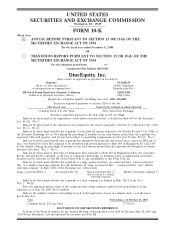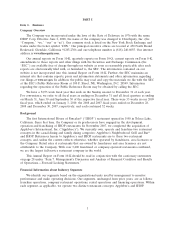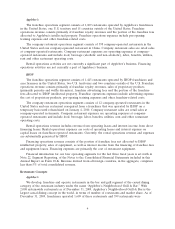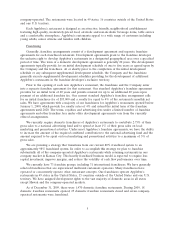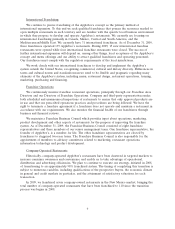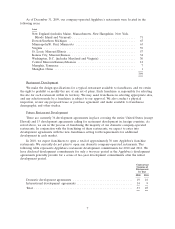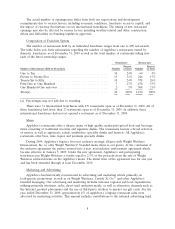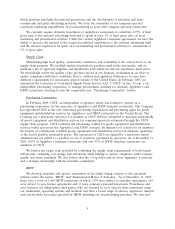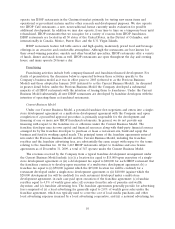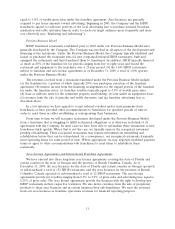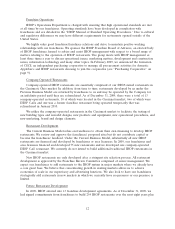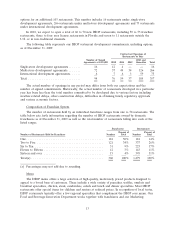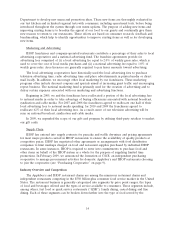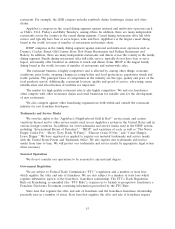IHOP 2009 Annual Report Download - page 24
Download and view the complete annual report
Please find page 24 of the 2009 IHOP annual report below. You can navigate through the pages in the report by either clicking on the pages listed below, or by using the keyword search tool below to find specific information within the annual report.
company-operated. The restaurants were located in 49 states, 16 countries outside of the United States
and one U.S. territory.
Each Applebee’s restaurant is designed as an attractive, friendly, neighborhood establishment
featuring high quality, moderately-priced food, alcoholic and non-alcoholic beverage items, table service
and a comfortable atmosphere. Applebee’s restaurants appeal to a wide range of customers including
young adults, senior citizens and families with children.
Franchising
Generally, franchise arrangements consist of a development agreement and separate franchise
agreements for each franchised restaurant. Development agreements grant to the franchise developer
the exclusive right to develop Applebee’s restaurants in a designated geographical area over a specified
period of time. The term of a domestic development agreement is generally 20 years. The development
agreements typically provide for an initial development schedule of one to five years as agreed upon by
the Company and the franchisee. At or shortly prior to the completion of the initial development
schedule or any subsequent supplemental development schedule, the Company and the franchisee
generally execute supplemental development schedules providing for the development of additional
Applebee’s restaurants in the franchise developer’s exclusive territory.
Prior to the opening of each new Applebee’s restaurant, the franchisee and the Company enter
into a separate franchise agreement for that restaurant. Our standard Applebee’s franchise agreement
provides for an initial term of 20 years and permits renewal for up to an additional 20 years upon
payment of an additional franchise fee. Our current standard Applebee’s franchise arrangement calls
for an initial franchisee fee of $35,000 and a royalty fee equal to 4% of the restaurant’s monthly net
sales. We have agreements with a majority of our franchisees for Applebee’s restaurants opened before
January 1, 2000, which provide for royalty rates of 4% and extend the initial term of the franchise
agreements until 2020. The terms, royalties and advertising fees under a limited number of franchise
agreements and other franchise fees under older development agreements vary from the currently
offered arrangements.
We currently require domestic franchisees of Applebee’s restaurants to contribute 2.75% of their
gross sales to a national advertising fund and to spend at least 1% of their gross sales on local
marketing and promotional activities. Under most Applebee’s franchise agreements, we have the ability
to increase the amount of the required combined contribution to the national advertising fund and the
amount required to be spent on local marketing and promotional activities to a maximum of 5% of
gross sales.
We are pursuing a strategy that transitions from our current 80% franchised system to an
approximately 98% franchised system. In order to accomplish this strategy we plan to franchise
substantially all of the company-operated Applebee’s restaurants while retaining restaurants in one
company market in Kansas City. This heavily franchised business model is expected to require less
capital investment, improve margins, and reduce the volatility of cash flow performance over time.
We currently have 73 franchise groups, including 31 international franchisees. We have generally
selected franchisees that are experienced multi-unit restaurant operators. Many franchisees have
operated or concurrently operate other restaurant concepts. Our franchisees operate Applebee’s
restaurants in 49 states in the United States, 15 countries outside of the United States and one U.S.
territory. We have assigned development rights to the vast majority of domestic areas in all states
except Hawaii and the company-operated markets.
As of December 31, 2009, there were 1,470 domestic franchise restaurants. During 2009, 18
domestic franchise restaurants opened, 25 domestic franchise restaurants closed and seven company-
operated restaurants were franchised.
5








